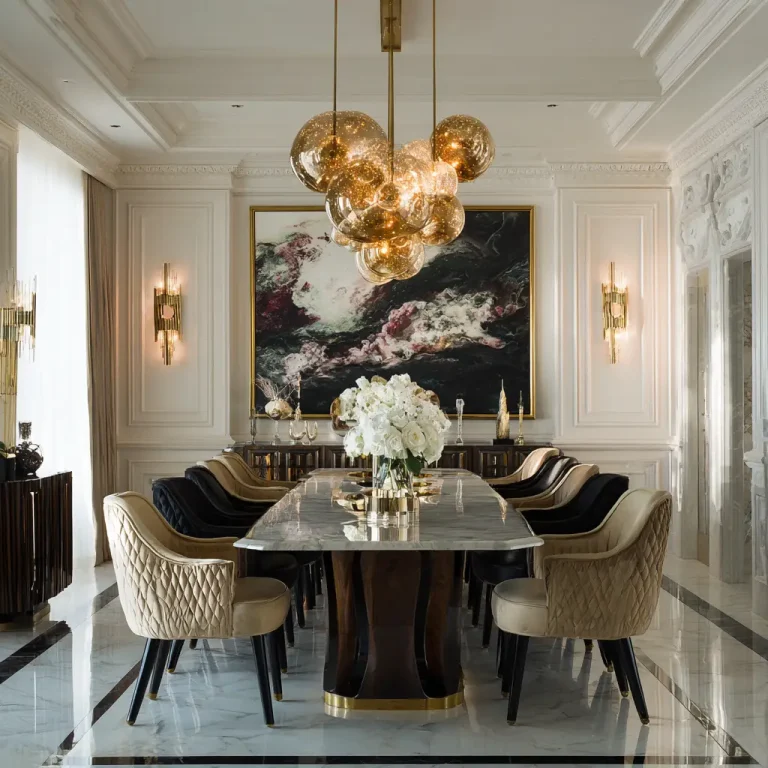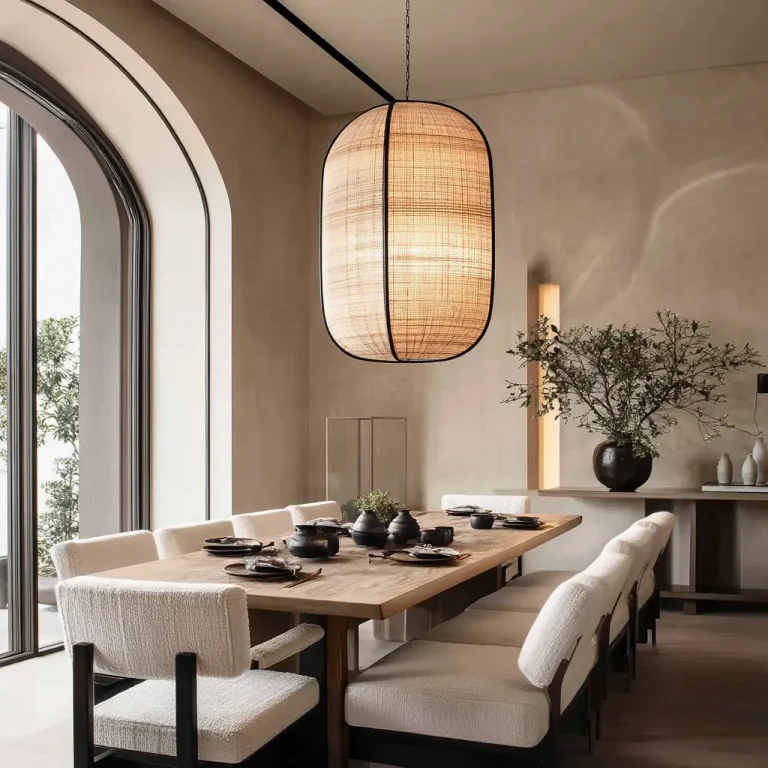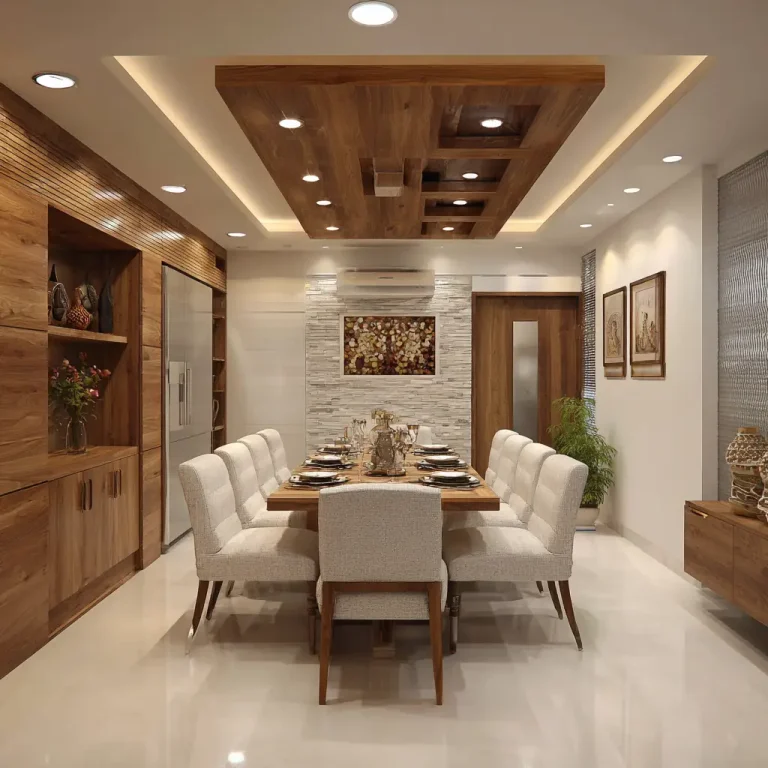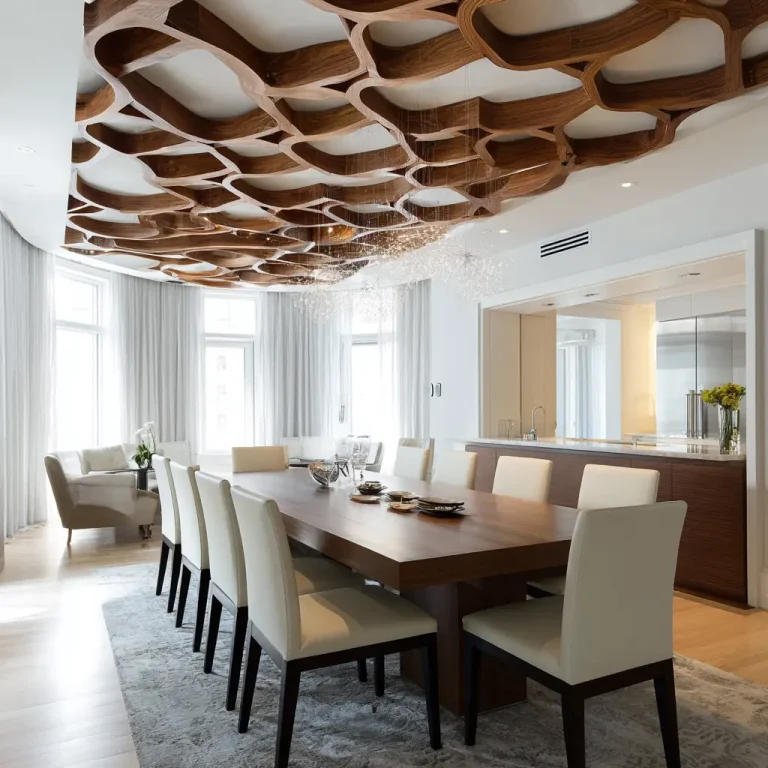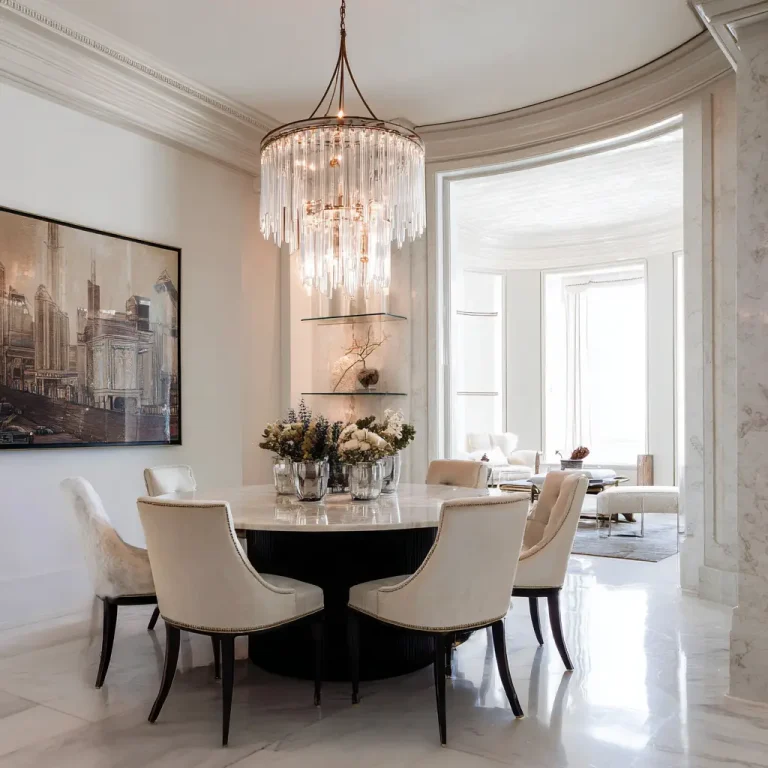17 Living Room with Dining Area Design Ideas
Combining a living room with a dining area isn’t just practical—it can be incredibly stylish. Whether you’re working with a small apartment or a spacious open-concept home, there are countless ways to create a functional, beautiful space that brings comfort and personality to both lounging and dining. Here are 17 creative design ideas to inspire your layout.
1. Use a Large Area Rug to Define Zones
An area rug under your seating area can help visually separate the living room from the dining area. Choose complementary rugs or one continuous rug to keep things cohesive.
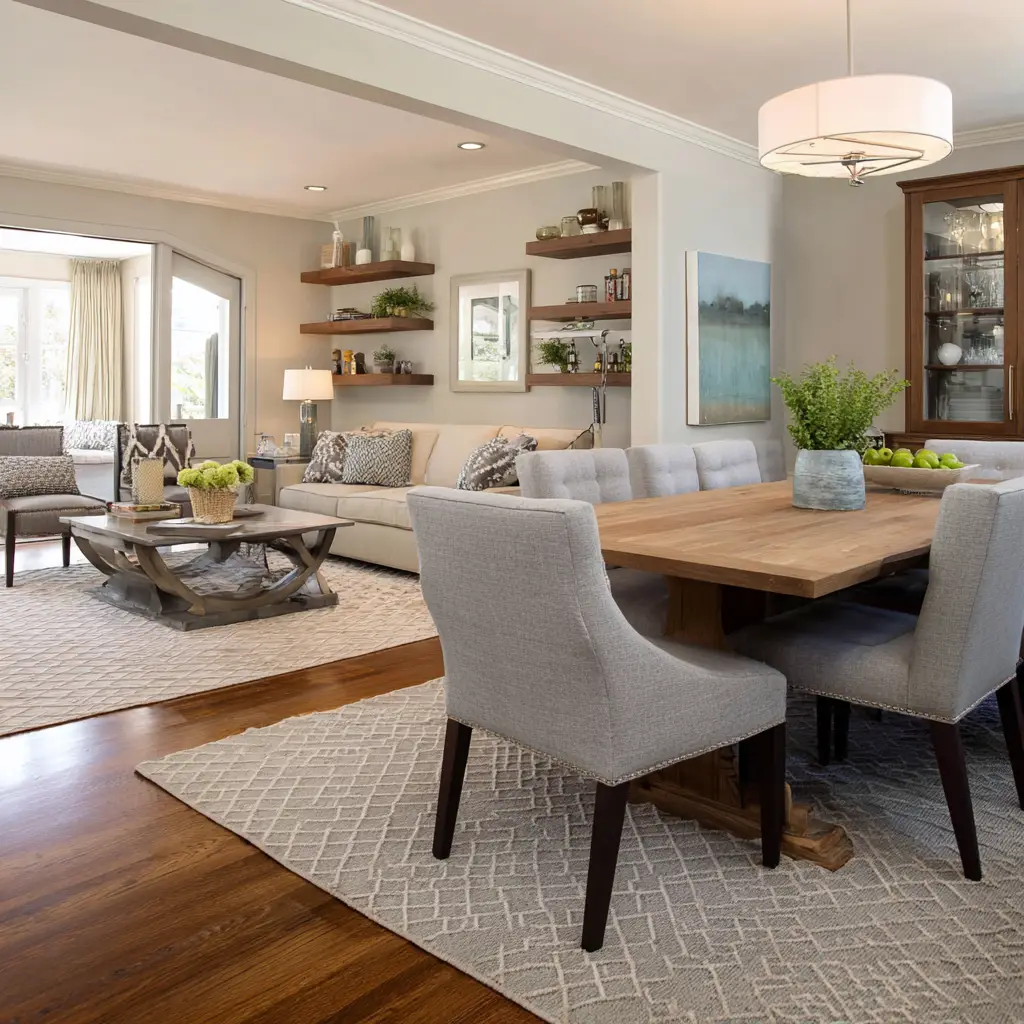
2. Create a Color Story
Use a consistent color palette across both areas. This could be soft neutrals for a calm space or bolder tones for a more vibrant and eclectic look.
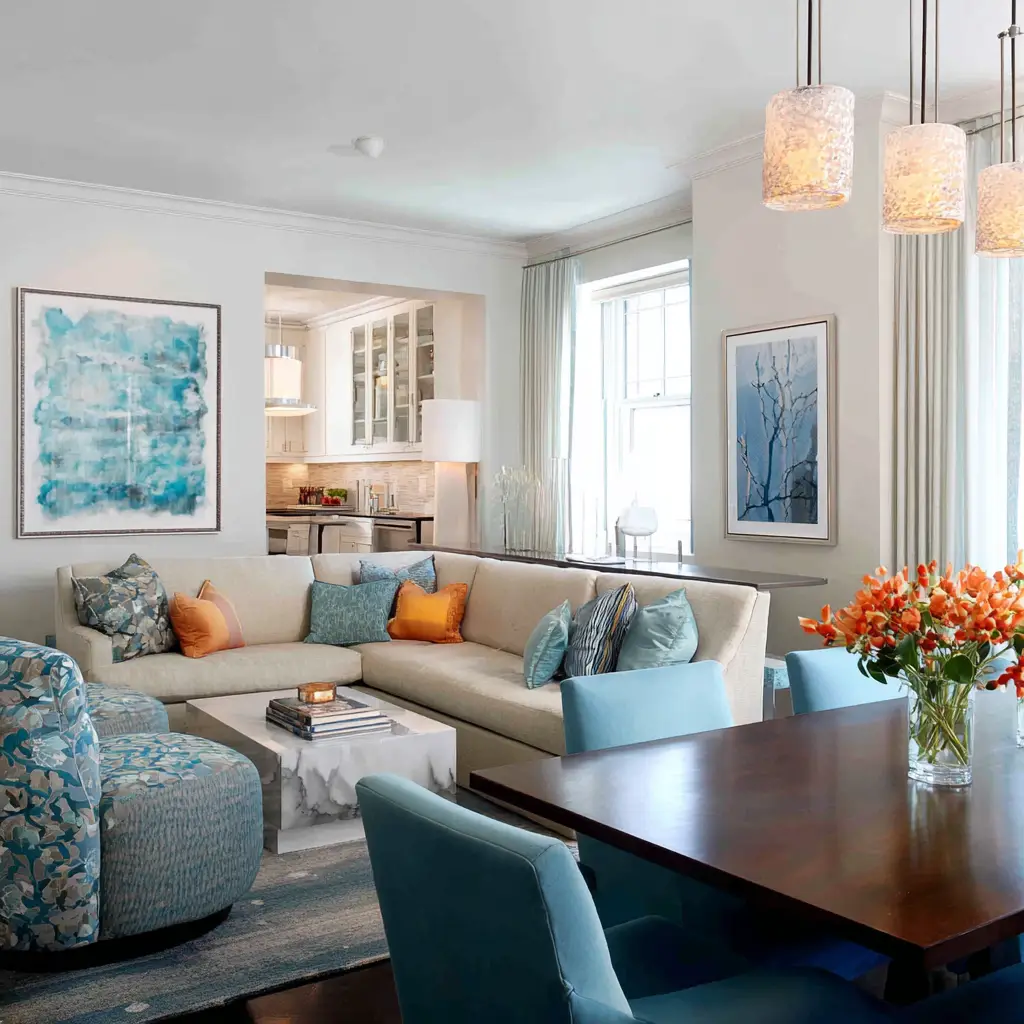
3. Divide with Furniture, Not Walls
Instead of a room divider, place your sofa with its back to the dining area to subtly separate the two spaces while keeping the flow open and inviting.

4. Add a Statement Light Fixture Over the Dining Table
A chandelier or pendant light above the dining table not only provides functional lighting but also creates a focal point that defines the eating space.
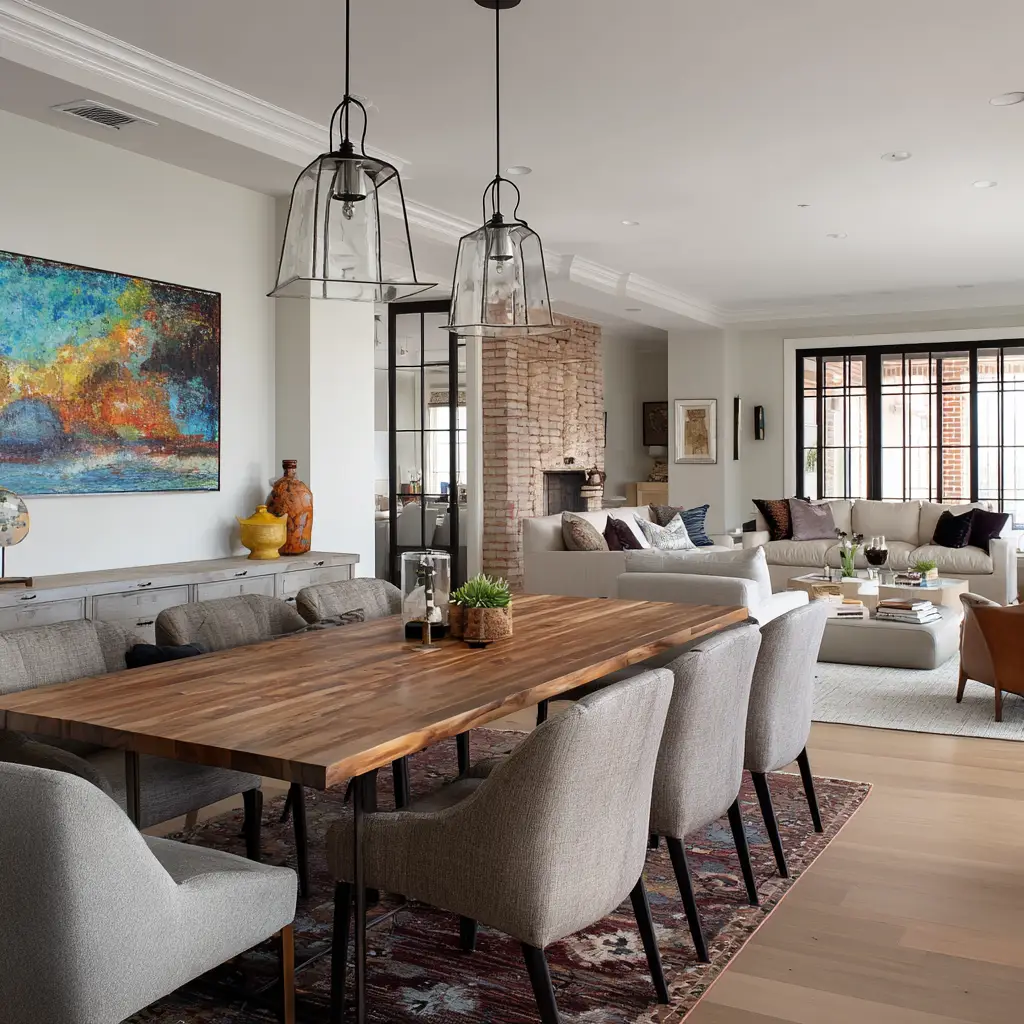
5. Incorporate a Bench or Banquette
Benches or built-in banquettes work well when space is limited and can double as additional seating for the living area.
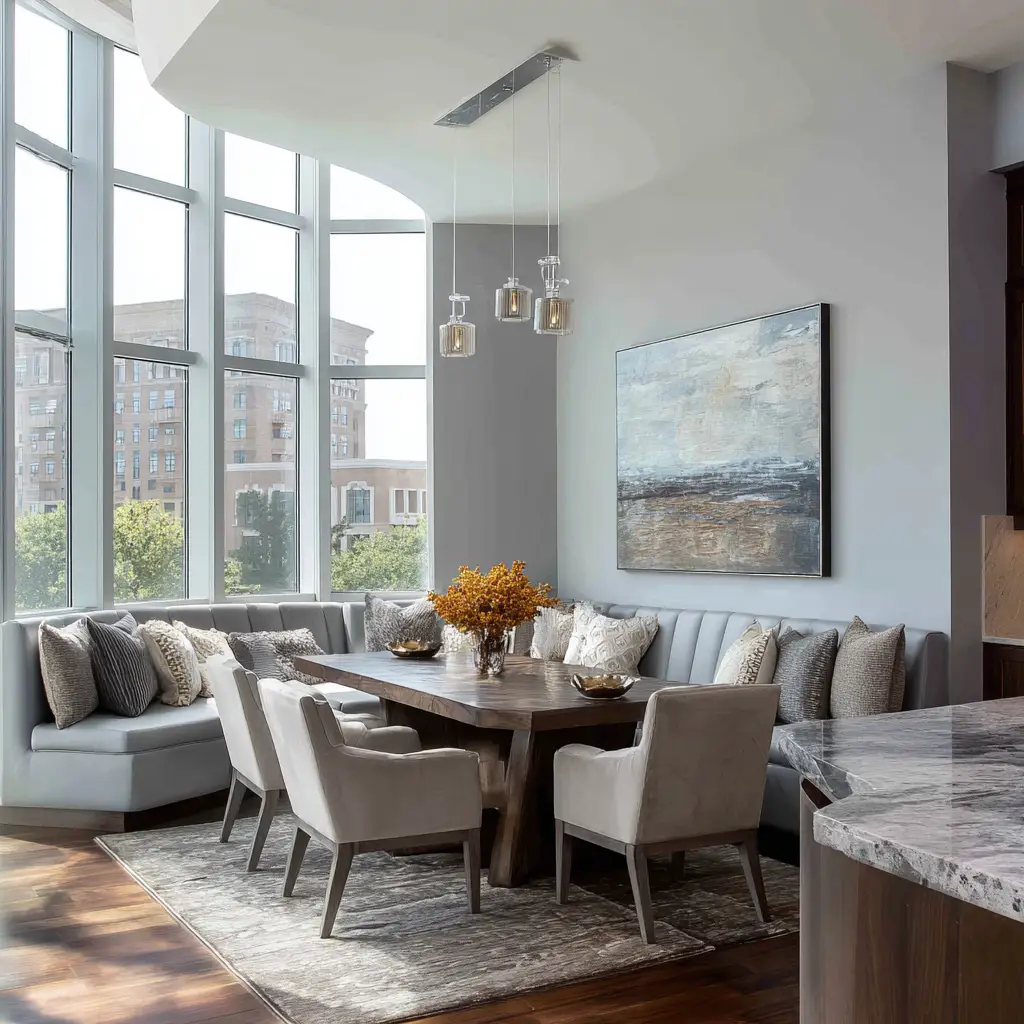
6. Play with Flooring
If your home allows, use different flooring materials—like hardwood for the living area and tile under the dining space—to visually distinguish the two areas.

7. Keep the Furniture Proportional
Make sure your furniture suits the space. A massive sectional might overpower the dining area, while a tiny table might feel lost in a large open-plan room.
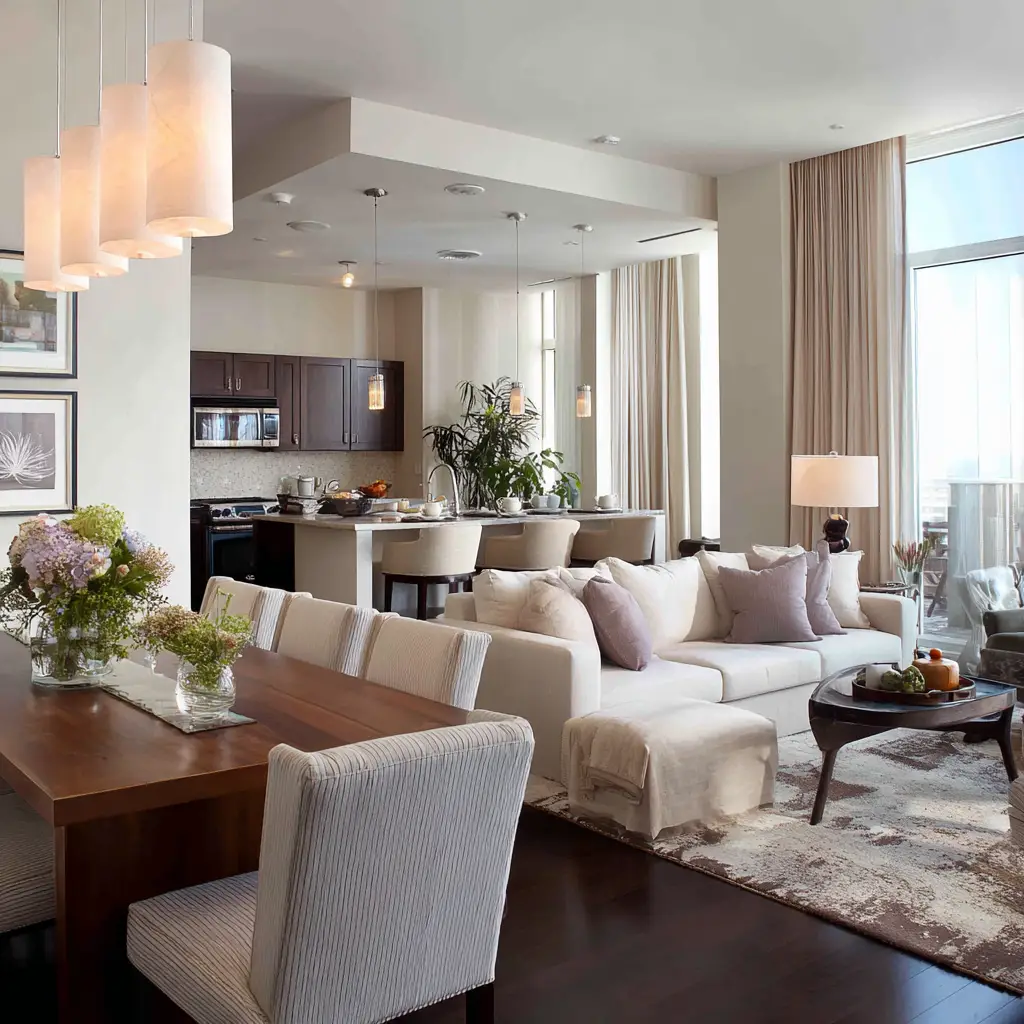
8. Use Open Shelving to Bridge the Two Areas
Install open shelving units that serve both zones. You can display books, plants, or dinnerware—whatever fits your style.
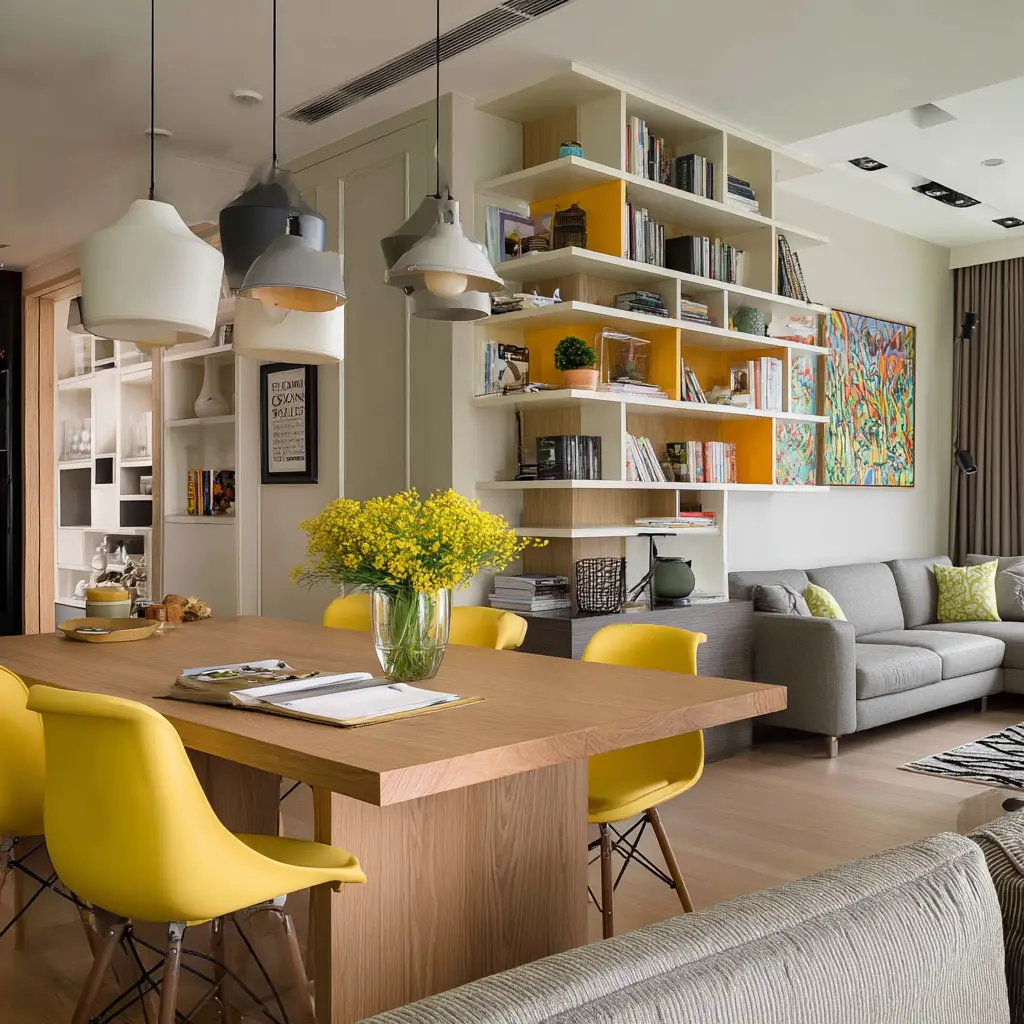
9. Try a Round Dining Table
A round table can soften the lines of a square or rectangular room and create better flow, especially in smaller spaces.
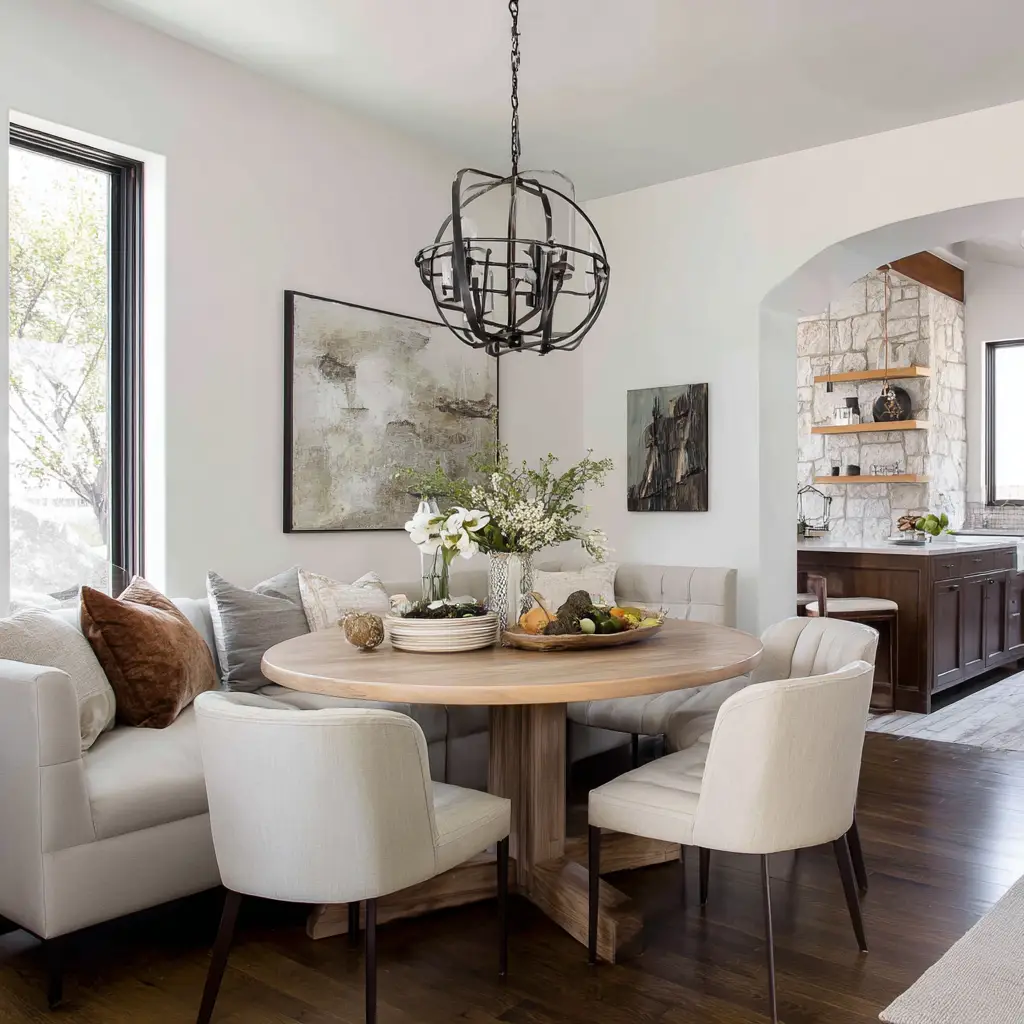
10. Let Natural Light Guide the Layout
Position your dining table near a window if possible, and let the living room enjoy cozy corners or focal points like a fireplace or TV wall.
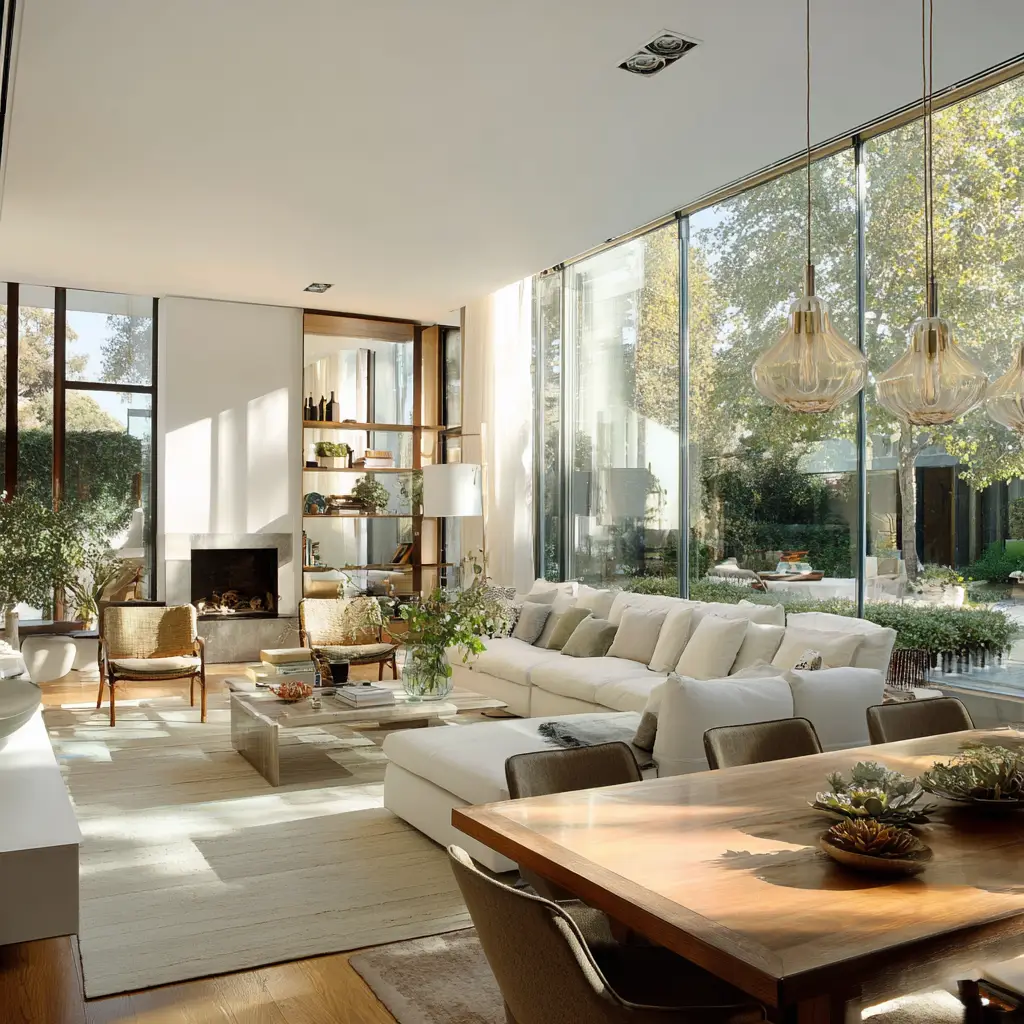
11. Add a Bar Cart or Sideboard
A stylish bar cart can be a fun transitional piece between the living and dining areas, adding function and flair.
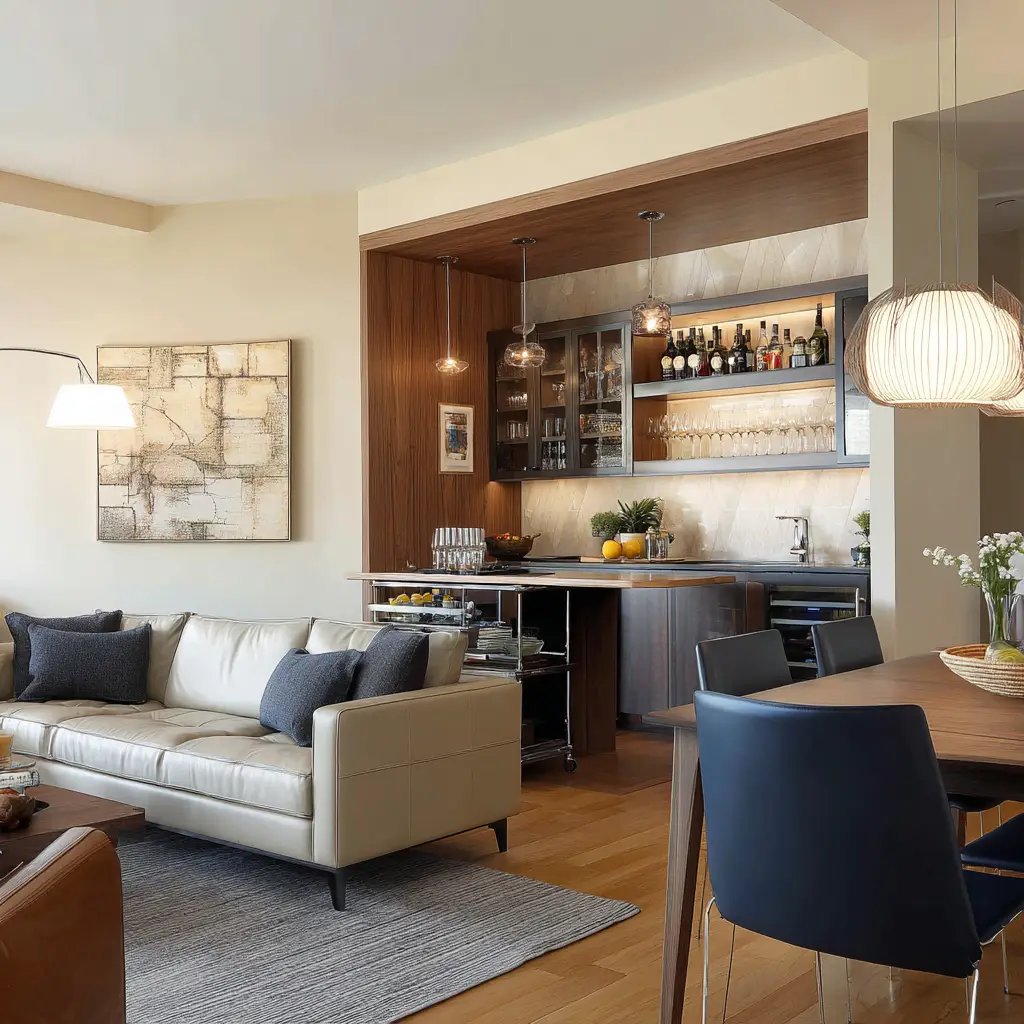
12. Opt for Modular or Multi-Functional Furniture
Choose pieces that can do double duty, like ottomans that provide storage or extendable dining tables that can grow with your needs.
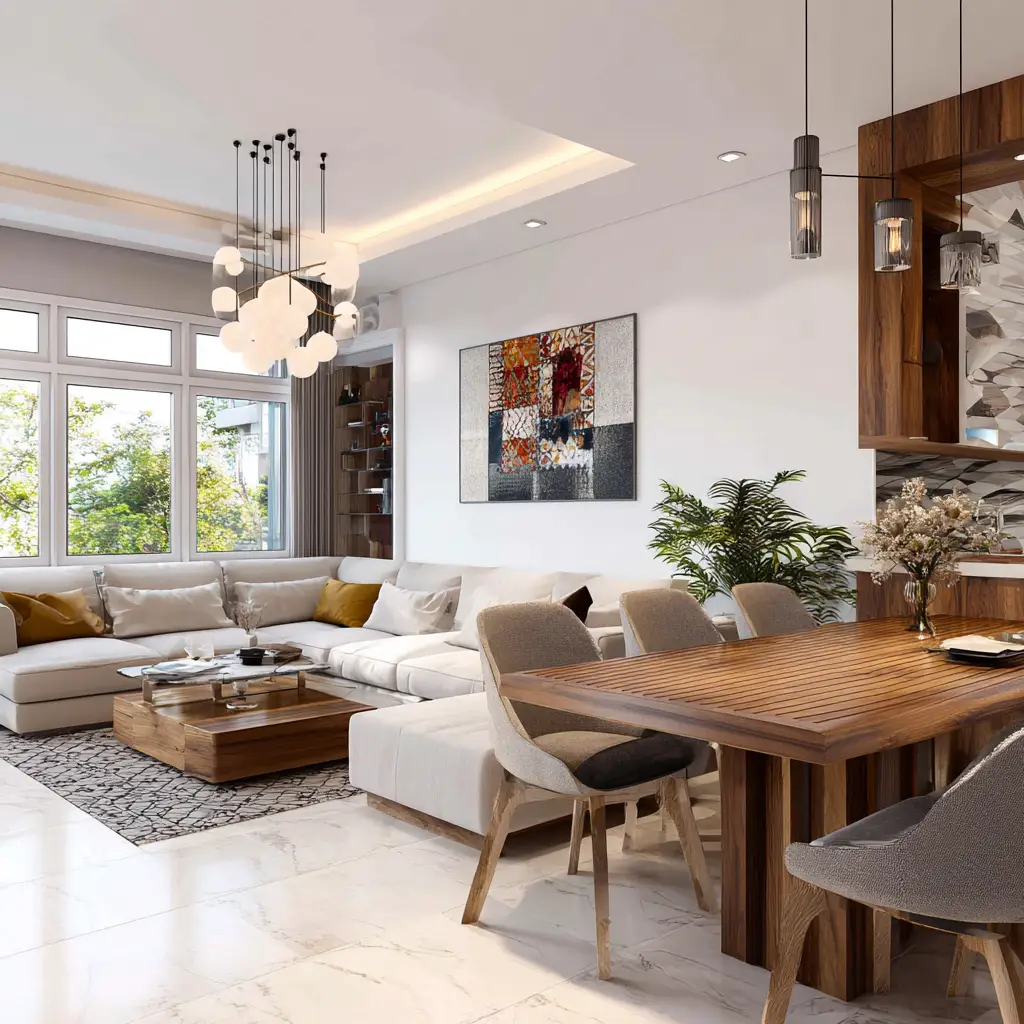
13. Hang Art to Create Connection
Choose art pieces that share a common theme, color, or texture to visually tie the two spaces together.
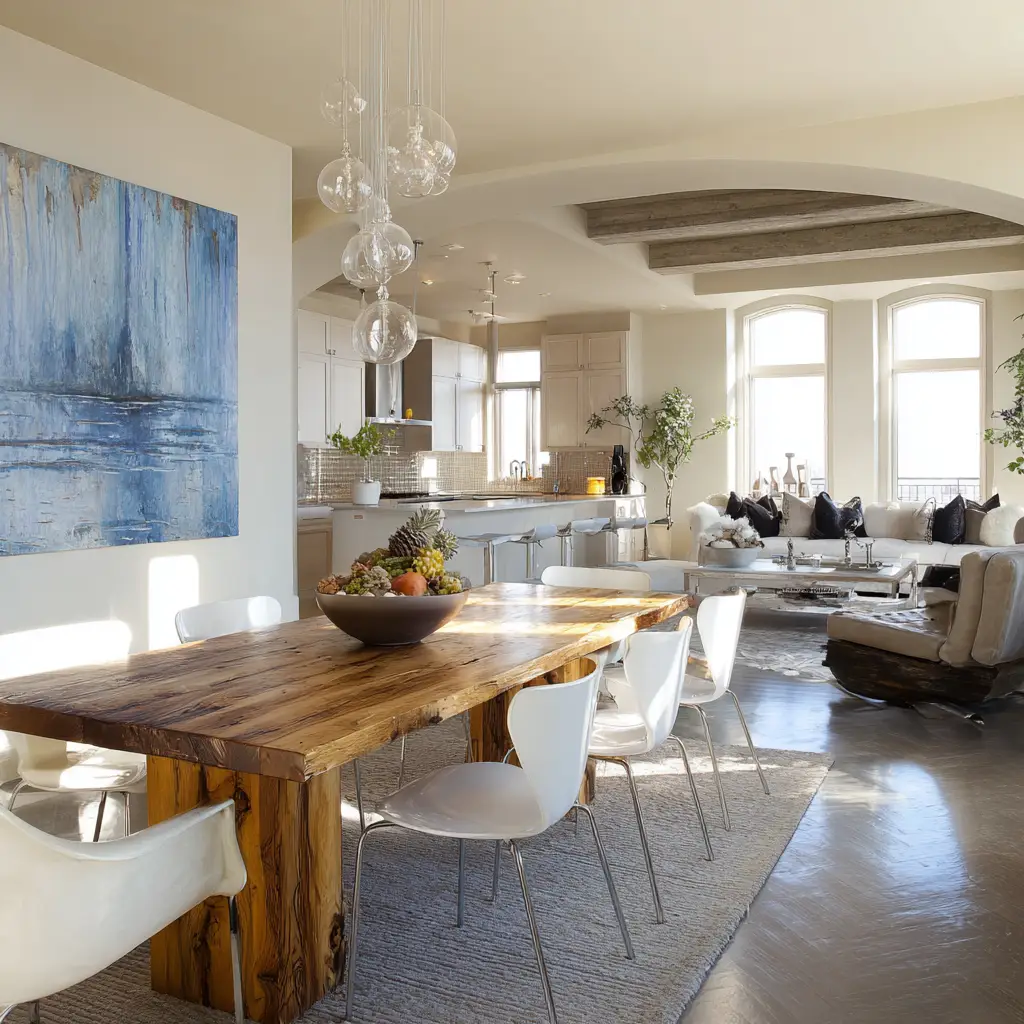
14. Use Plants as Natural Dividers
Large potted plants can act as soft dividers between your living and dining areas while also freshening up the atmosphere.
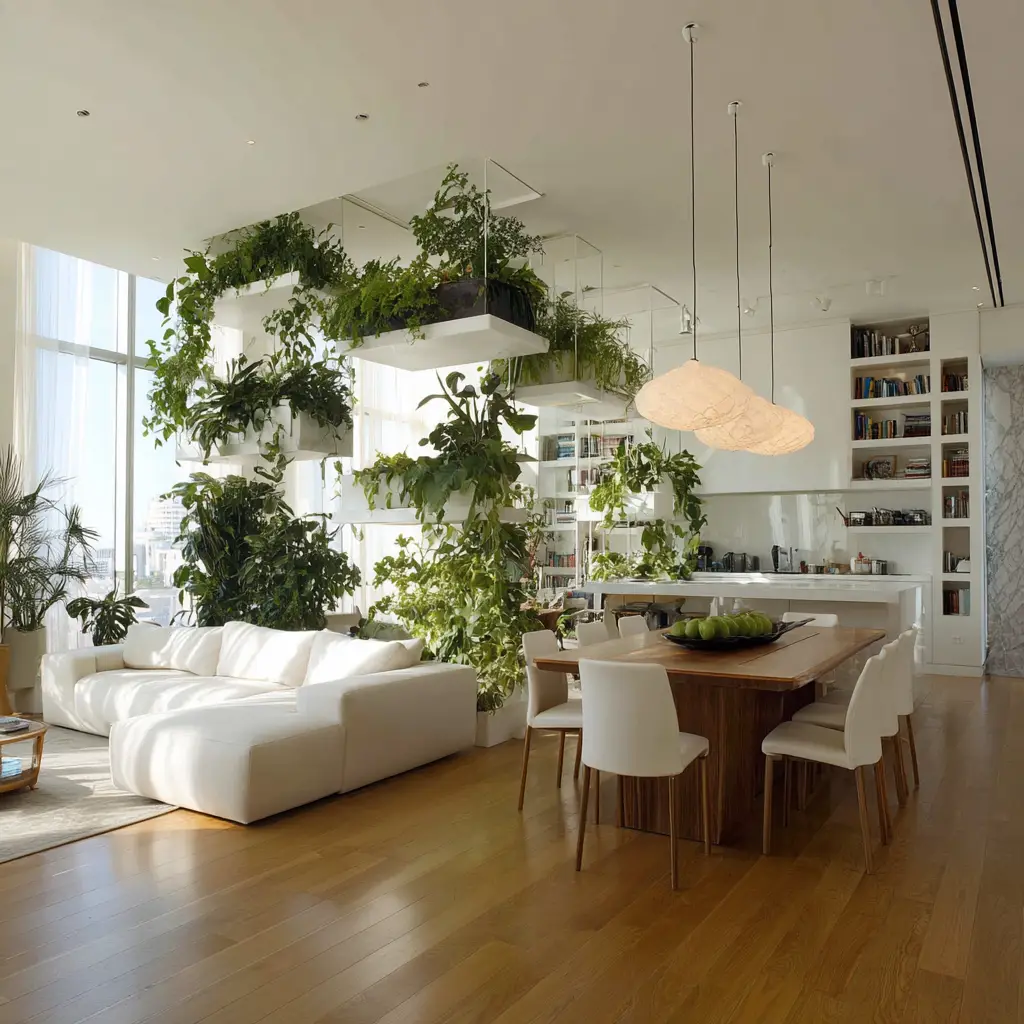
15. Keep the Wall Color Consistent
Using the same paint color across the whole space makes the area feel larger and more unified.
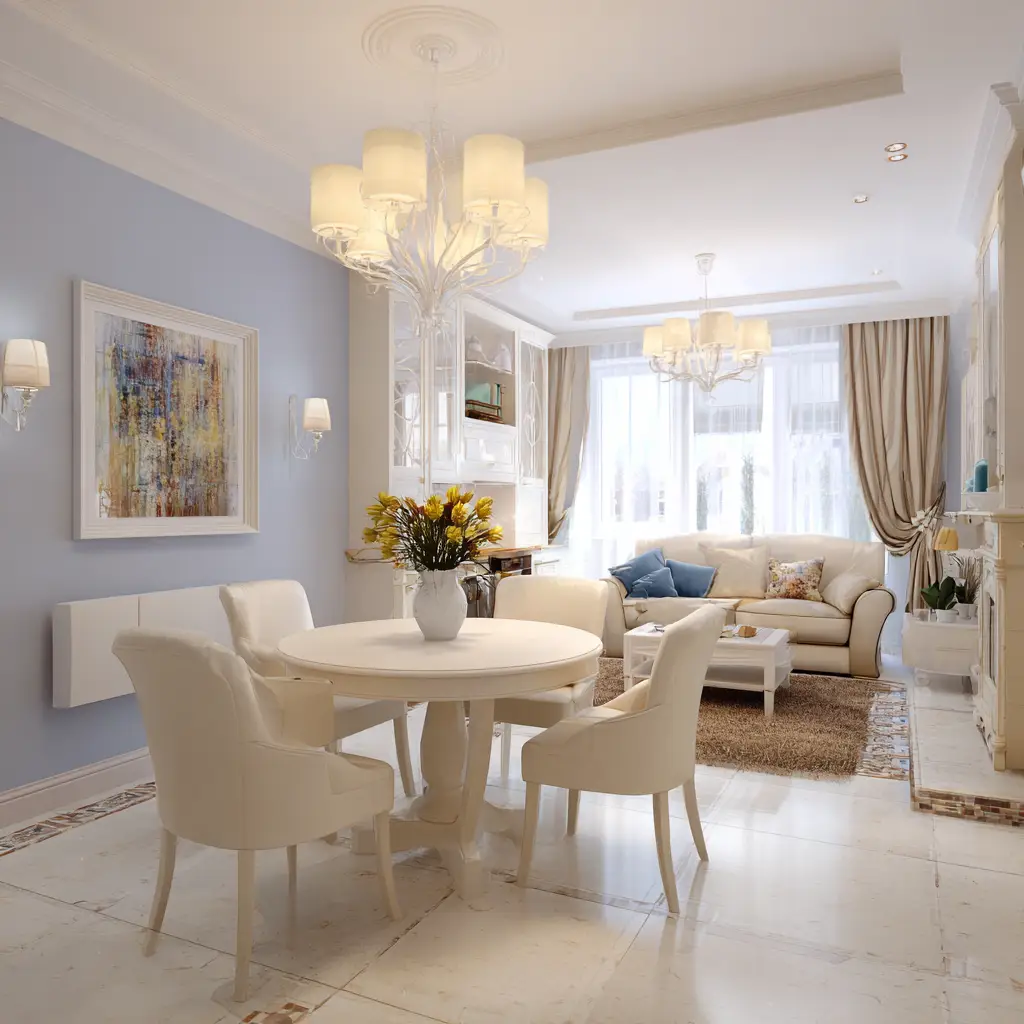
16. Incorporate a Gallery Wall
Place a gallery wall that spans both zones, allowing your personal style to flow seamlessly throughout.
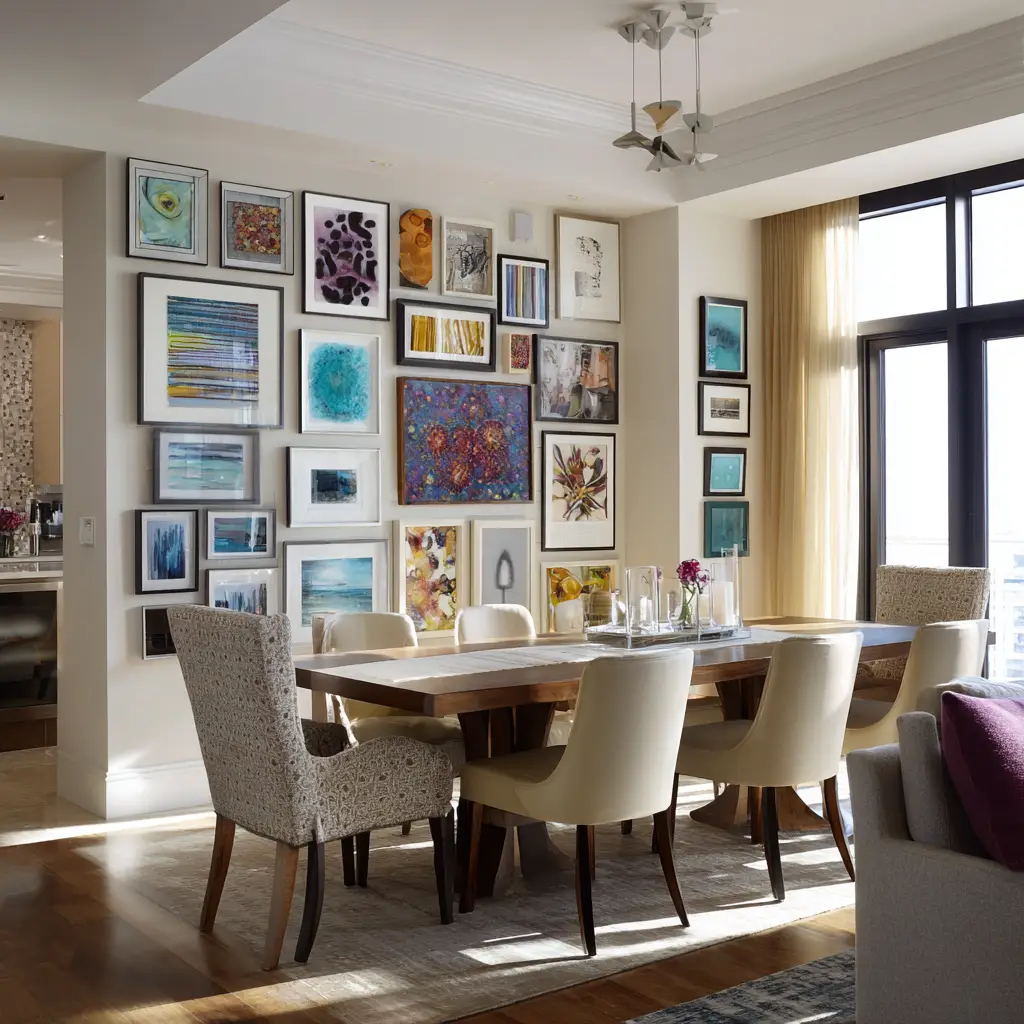
17. Embrace Symmetry
Symmetry can create a sense of order. Place furniture pieces so that there’s a visual balance between the living and dining areas.
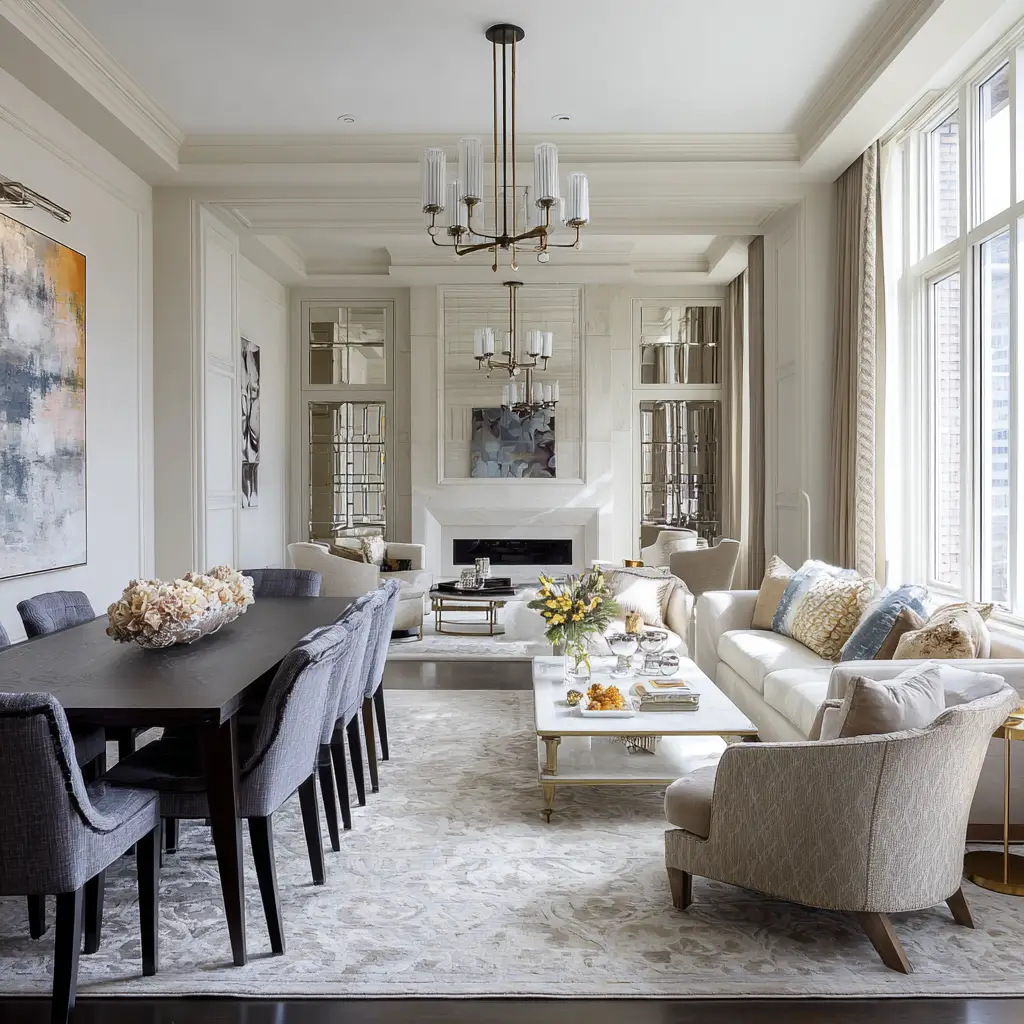
FAQs
How can I make a small living and dining room combo feel larger?
Use light colors, mirrors, and keep furniture minimal and multi-functional. Vertical storage and clear zones also help make the space feel bigger.
What’s the best way to divide a living and dining room without a wall?
Use rugs, furniture placement, lighting, or even subtle floor level changes to create definition without building walls.
Should the dining area match the living room?
They don’t have to match exactly, but they should complement each other. A shared color palette or similar materials can help the space feel harmonious.
Is it okay to mix design styles between the two spaces?
Yes, mixing styles can add interest. Just make sure there’s at least one unifying element—like color, texture, or shape—to avoid visual chaos.
Can I use different lighting in each area?
Absolutely. Task lighting for the dining area and ambient lighting for the living area is a great approach. Just keep the fixtures stylistically consistent.
Conclusion
Designing a living room with a dining area is all about balance, comfort, and personal expression. By blending practical design elements with thoughtful aesthetics, you can create a space that feels open yet defined, stylish yet livable. Whether your space is cozy or grand, there’s always a way to make the most of a shared living-dining area—one that feels just like home.
